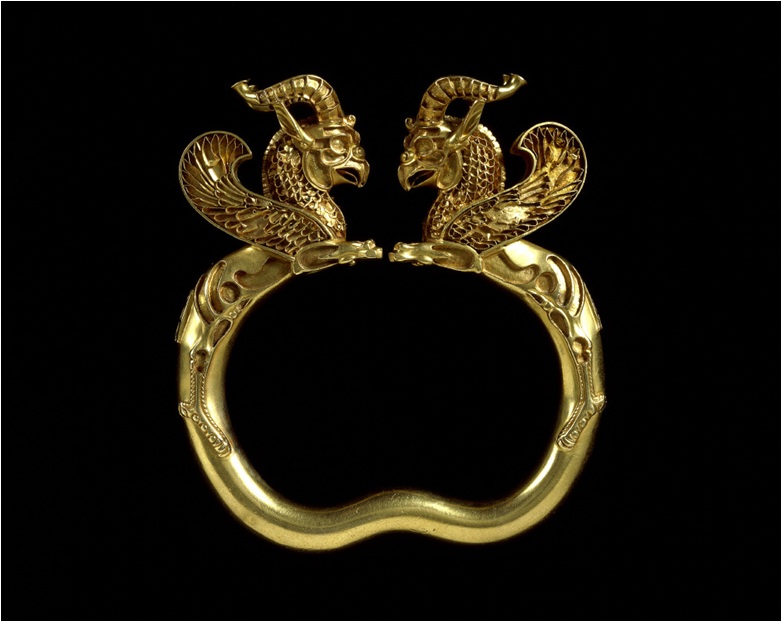The Cyrus Cylinder Goes on View at the Sackler Gallery
The Cyrus Cylinder makes its U.S. debut on March 9. It is considered one of the most important archaeological artifacts in history.
When Cyrus the Great conquered Babylon in 539 B.C., he encountered the same problem many political leaders face today: How do rulers keep the peace?
Cyrus, the King of Persia, was in the midst of building the largest empire that the world had ever seen. By his death in 530 B.C., his reign would extend from present-day Turkey to India.
For Cyrus, establishing control over vast miles of land with peoples of different cultures, languages and faiths created numerous obstacles in unifying his kingdom. The king sought order, not more war. “It is the first time anyone has had to address that challenge,” says Neil MacGregor, director of London’s British Museum.
“As well as a transport system, as well as an economic system, as well as an administration, you need to have policy, an ideal of what you’re trying to do to control this empire,” he adds.
Cyrus’s solution can be found today on a football-shaped cylinder of baked clay: give people the freedom to practice whatever religion they please.
The Cyrus Cylinder, one of the most significant archaeological artifacts in history, travels here from the British Museum and makes its United States debut on Saturday, March 9, 2013, at the Sackler Gallery. Inscribed with cuneiform, one of the earliest known scripts, the text denounces Nabonidus, the displaced Babylonian King, and boasts of liberating Cyrus’s newly conquered people from religious persecution by restoring their temples, their temple goods and their ceremonial vessels; and sending prisoners and the enslaved home to worship their own gods. ” returned to their settlements, and the gods of the land . . . I returned them unharmed to their cells, in the sanctuaries that make them happy,” Cyrus declares in the text. “I have enabled all the lands to live in peace.” (See the full translation here.)

“The Cyrus Cylinder and Ancient Persia” includes artifacts from Cyrus the Great’s vast Achaemenid Empire (550–331 BC), like this gold griffin-headed amulet from the region of Takht-i Kuwad, Tadjikistan. Photo courtesy of the Sackler Gallery.
Cyrus’s tolerant approach has had a lasting impact. According to MacGregor, “For Europeans and Americans in the 18th century, there is only one political problem: How do you avoid the wars of religion that had devastated Europe in the 16th and 17th centuries? How do you create a state where people don’t kill each other for their faith? Everybody goes back to Cyrus.”
The exhibition entitled, “The Cyrus Cylinder and Ancient Persia,” features quotes and historical artifacts that trace the generations of political thinkers inspired by Cyrus’s philosophy. Thomas Jefferson studied the life of Cyrus; he owned two copies of a biography of the king.
Julien Raby, director of the Sackler Gallery, hopes the exhibit will encourage visitors to appreciate how different cultures learn to value objects in different ways. “There isn’t a single story,” he explains. “It’s actually about looking at the way in which we constantly reinterpret, the way that different eras and different agendas take objects and project onto them.”
MacGregor thinks Cyrus’s legacy is particularly important today. “We are confronting in every one of our cities, in Europe and in America, a new kind of diversity—people of different ethnicities, languages, faiths, traditions trying to live together,” he says. “We don’t really have a model for this. But we all know that somebody once did.”
“The Cyrus Cylinder and Ancient Persia” is on view at the Sackler Gallery from March 9 to April 28, before making a nation-wide tour. For a list of locations and dates, visit the exhibition’s website.
To learn more about the cylinder itself, watch MacGregor detail its history and significance in a 2011 TED talk, “2,600 Years of History in One Object.”
/https://tf-cmsv2-smithsonianmag-media.s3.amazonaws.com/accounts/headshot/paul-bisceglio-240.jpg)
/https://tf-cmsv2-smithsonianmag-media.s3.amazonaws.com/accounts/headshot/paul-bisceglio-240.jpg)